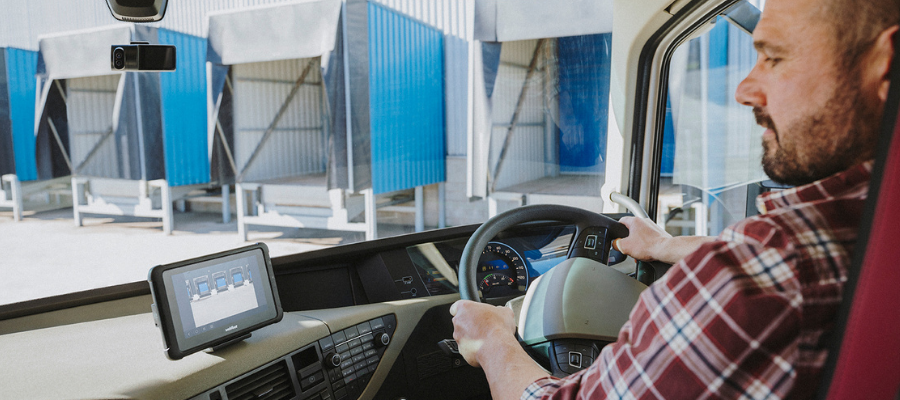🕒 Article read time: 2 minutes
Solving transport’s productivity puzzle
Sponsored content

Beverley Wise, Regional Director UK & Ireland for Webfleet Solutions, explains how digitisation can be the route to boosting output and more efficient ways of working.
The UK’s “productivity puzzle” continues with the country’s economic output lagging behind its competitors.
Pre-pandemic, between 2009 and 2019, our output per hour growth was the second slowest of the G7 countries, according to the Office for National Statistics (ONS). And after Covid struck in 2020, the UK suffered larger falls in GDP.
The government has committed to a high-productivity economy with support for the adoption of digital technology a central pillar of its strategy to tackle the problem.
FLEETS ARE ALREADY GRASPING THE NETTLE
Encouragingly, fleet businesses are already grasping the nettle. A Webfleet Solutions study reveals that three-quarters (74 per cent) of UK fleets have adopted more digital solutions since the start of the pandemic.
Connected tech systems – with telematics platforms at their heart – are triggering new ways of working, automating business processes and improving workflow management.
Using WEBFLEET, Webfleet Solutions’ vehicle management software, for example, jobs and orders can be sent with automatic routing information directly to drivers’ dedicated terminals or a mobile application. This not only helps them circumvent paralysing traffic congestion, but truck-specific navigation will also route them around access restrictions.
ROUTING AND SCHEDULING SOLUTIONS
Routing and scheduling solutions allow managers to improve the visibility of their daily workflow and the sequence of jobs can be optimised in a click of a button. Customers, all the while, can also be kept up to date with automatic email or text notifications, making them aware of ETAs and changes to schedules as they happen.
Information from the customer can be relayed into ERP, CRM or accounting software suites and invoices can be automated, with accurate telematics data detailing time spent with clients.
SIMPLIFYING TRANSPORT PROCESSES
Drivers’ tablet-style terminals can also host a range of applications to simplify and streamline transport processes.
Business partner apps on the WEBFLEET PRO 8 series, for example, can be used to simplify order management, scan barcodes and capture signatures for proof of delivery, conduct VOSA-compliant daily vehicle checks, record photos of defects, report accidents and scan trailers – with results instantly relayed to the back office.
WEBFLEET’s remote download and archiving module TachoShare can help to keeps trucks on the road and reduce admin, while giving users the compliance tools they need. This solution digitally downloads tachograph data from vehicles and enables users to share it directly with their analysis software.
In addition, telematics can help reduce vehicle downtime, meaning vehicles spend less time on the ramp and more time on the road.
PROACTIVE MAINTENANCE PLANNING
Key to reducing downtime are regular maintenance schedule alerts, and systems will also notify the back office when a vehicle is showing signs of malfunction, resulting in proactive maintenance planning.
The recent launch of WEBFLEET TPMS signals a significant development here, utilising sensors that continuously monitor tyre pressure levels and tyre temperature. The majority of heavy truck breakdowns on European roads are caused by tyre-related issues, but manual pressure checks are time consuming and slow leaks are difficult for drivers to detect. WEBFLEET TPMS automates this process.
The digital keys that can unlock the door to improved productivity are with us, and it is the risk of being left behind that may prove the catalyst needed for accelerated adoption by transport and logistics operators.
*www.webfleet.com/en-gb/webfleet/fleet-management
Published On: 03/02/2022 16:00:54

Comments Section
If you are a Logistics UK member login to add comments.